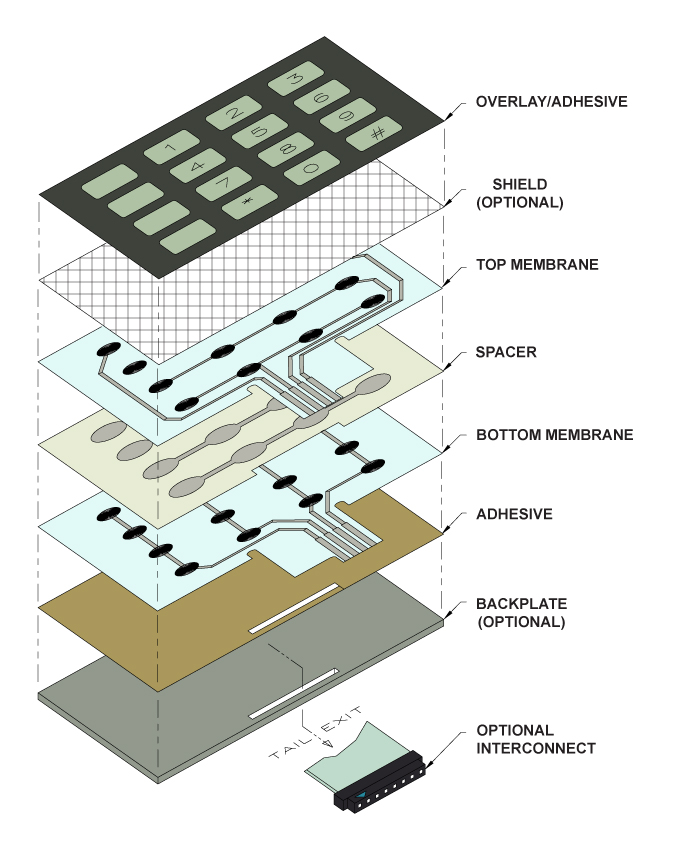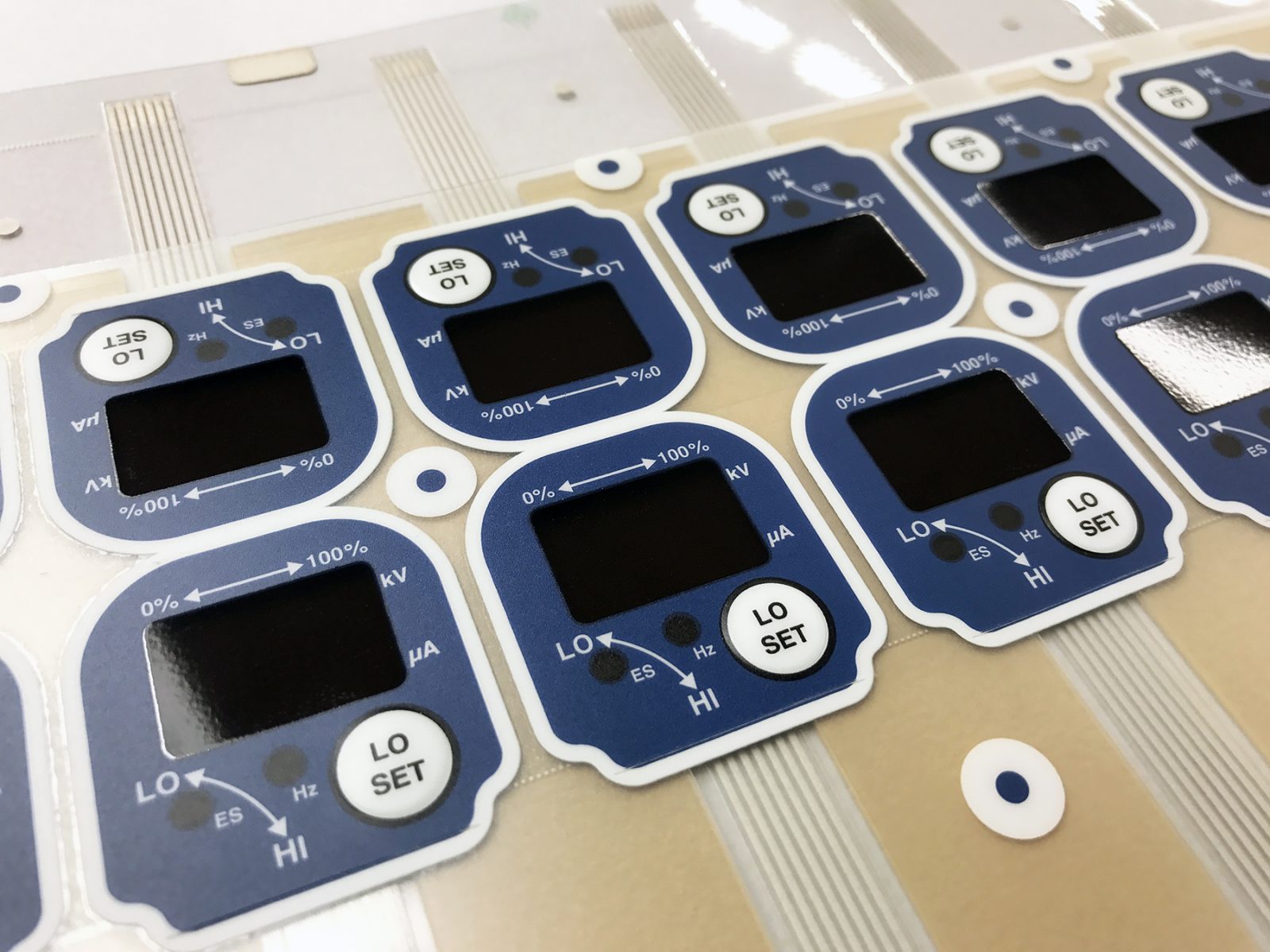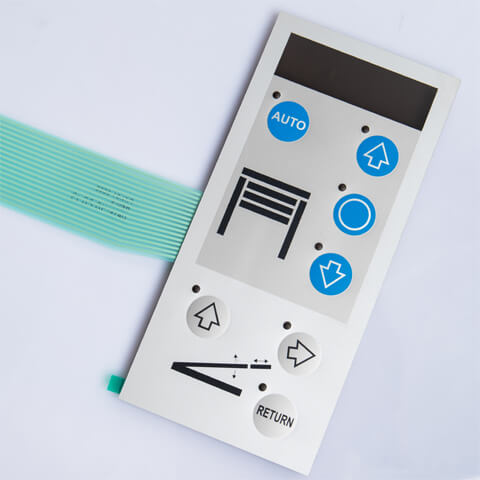Recognizing the Performance of Membrane Layer Switches Over for User User Interface Gadget
The performance of membrane layer changes represents a considerable development in user interface layout, integrating efficiency with aesthetic flexibility. As markets significantly prioritize customer experience, understanding the subtleties of membrane layer button technology becomes important.
What Are Membrane Layer Switches?
Membrane layer switches are ingenious user interface devices that facilitate individual interaction with electronic devices. These versatile components consist of numerous layers, consisting of a graphic overlay, spacer, and a published circuit layer. The layout permits a smooth assimilation into different digital devices, improving both the visual and functional aspects of individual interfaces.
Membrane switches are commonly employed in a variety of applications, from family appliances to industrial machinery and medical gadgets. Their building typically includes a thin account, making them a suitable choice for compact styles. The tactile comments offered by these switches can be crafted to satisfy details user choices, making sure reliable communication in between the customer and the tool.
Sturdiness is an additional substantial advantage of membrane layer switches, as they are resistant to dirt, moisture, and chemicals, which enhances their life expectancy popular settings. Additionally, these switches can be tailored in terms of shape, dimension, and graphic style, enabling for branding and user-specific functions. Overall, membrane switches represent a functional option for improving individual experience in digital devices, incorporating functionality with aesthetic allure in an efficient fashion.
Just How Membrane Layer Switches Work
Operating on a simple principle, membrane switches use a split building and construction to sign up individual input properly. Each switch includes numerous layers, consisting of a published circuit layer, a spacer layer, and a top graphic layer, which are developed to work together seamlessly. When a user presses the top layer, it presses the spacer layer, bringing the conductive elements of the circuit layer into call with each other.
This get in touch with creates a shut circuit, indicating the tool to implement a particular function. The style enables different setups, consisting of responsive comments, which can boost the individual experience by giving a physical experience upon activation. The materials used in membrane layer switches typically consist of versatile substrates, such as polyester or polycarbonate, which make sure longevity and strength against deterioration.

Secret Advantages of Membrane Layer Switches

One more significant advantage is their density. Membrane layer buttons are thin and light-weight, which enables manufacturers to conserve area in their gadgets without sacrificing functionality. This feature is specifically beneficial in applications where weight and volume are essential considerations.
Additionally, membrane layer switches are immune to dirt, moisture, and chemicals, enhancing their sturdiness. This durability prolongs their lifespan and reduces the requirement for regular replacements, leading to price financial savings with time.
Furthermore, the responsive comments offered by membrane buttons can be optimized to improve customer interaction. They can consist of features such as raised buttons or audible clicks, boosting usability and user experience.
Applications Throughout Industries
User user interface tools using membrane buttons are widespread in a wide selection of markets, showcasing their flexibility and functionality. Membrane Switch. In the medical industry, membrane switches are essential to devices such as diagnostic tools and client tracking systems, where their durability and ease of cleaning are important for keeping hygiene requirements. Likewise, in the auto sector, these switches are used in dashboard controls and infomercial systems, offering a streamlined and modern-day interface for users.
In addition, the customer electronic devices market take advantage of membrane buttons in appliances and portable tools, where small design and straightforward interfaces enhance customer experience. Industrial applications likewise leverage membrane layer switches over for control board in equipment and automation systems, stressing their toughness and resistance to extreme settings.
In the aerospace and protection sectors, membrane buttons are utilized in cabin controls and devices, where reliability and performance under severe problems are critical. Furthermore, the pc gaming market progressively integrates membrane buttons in controllers and game makers, adding to an appealing individual experience. In general, the adaptability of membrane layer switches enables their prevalent usage throughout numerous industries, highlighting their value in modern interface layout.
Future Patterns in Membrane Switch Over Technology

Additionally, making use of sophisticated products, such as polycarbonate and polyester this link movies, is expected to climb, giving improved resilience and resistance to ecological stress factors. These materials add to the general long life of membrane layer buttons, making them appropriate for harsher commercial applications.
Moreover, the consolidation of wise technology, including IoT connectivity, will enable membrane layer switches to communicate with other devices and systems, facilitating an extra interactive customer experience. This fad aligns with the growing need for clever devices throughout various markets, from health care to consumer electronics.
Last but not least, customization options are anticipated to expand, enabling manufacturers to create bespoke remedies customized to specific user requirements and preferences. These developments will place membrane switches as essential elements in the evolution of interface innovation.
Conclusion
Finally, membrane layer switches represent a pivotal development in interface innovation, offering a dependable and versatile remedy for diverse digital applications. Their layered building and construction helps with portable layout, while functions such as tactile responses improve customer communication. The resilience visit homepage versus ecological elements additionally solidifies their utility throughout several sectors. As improvements in material science and touch sensing technologies proceed, the performance and applicability of membrane switches are expected to broaden, enhancing their significance in modern electronic devices.